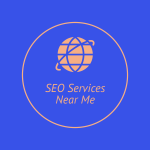On-Page Optimization: How to Optimize Your Website's Content for Search Engines
On-page optimization is a crucial aspect of SEO that involves optimizing the content and structure of individual web pages to rank higher in search engine results pages (SERPs). In this article, we’ll go over the basics of on-page optimization and provide you with some practical tips on how to optimize your website’s content for search engines.
What is On-Page Optimization?
On-page optimization refers to the process of optimizing the content and structure of individual web pages to improve their relevance and ranking in search engine results pages (SERPs). On-page optimization includes elements such as title tags, meta descriptions, header tags, content optimization, and URL structure.
Why is On-Page Optimization Important?
On-page optimization is important because it helps search engines understand the content of your web pages and rank them accordingly. By optimizing your on-page elements, you can improve your website’s relevance to specific keywords and phrases, making it easier for search engines to index your content and present it to potential users in SERPs.
On-Page Optimization Techniques
1. Title Tags: The title tag is an HTML element that specifies the title of a web page. It’s the first thing that search engines look at when determining the relevance of a page to a particular search query. Make sure to include your primary keyword in the title tag and keep it under 60 characters.
Example: “Organic Skincare Products – Best Organic Skincare Brands – Organic Beauty Co.”
2. Meta Descriptions: The meta description is an HTML element that provides a brief summary of a web page’s content. It’s displayed below the title tag in SERPs and can affect click-through rates. Make sure to include your primary keyword in the meta description and keep it under 155 characters.
Example: “Discover the best organic skincare brands at Organic Beauty Co. Our organic skincare products are made with natural ingredients and are perfect for sensitive skin.”
3. Header Tags: Header tags (H1, H2, H3, etc.) are HTML elements that indicate the importance of different sections of a web page’s content. The H1 tag should be used for the main heading of the page and should include the primary keyword.
Example:
<H1> Organic Skincare Products </H1>
<H2> Best Organic Skincare Brands </H2>
4. Content Optimization: Content optimization involves using your primary and related keywords throughout the content of your web pages. Make sure to use your primary keyword in the first paragraph of your content and throughout the body of your content. Use related keywords and phrases to add context and improve the relevance of your content.
Example:
“Our organic skincare products are made with natural ingredients that are gentle on sensitive skin. Our best organic skincare brands include The Organic Pharmacy, Juice Beauty, and True Botanicals.”
5. URL Structure: The URL structure of your web pages can affect their ranking in SERPs. Make sure to include your primary keyword in the URL and keep it short and descriptive.
Example: www.organicbeautyco.com/organic-skincare-products
Conclusion
On-page optimization is an important aspect of SEO that can improve the relevance and ranking of your web pages in search engine results pages (SERPs). By optimizing your title tags, meta descriptions, header tags, content, and URL structure, you can make it easier for search engines to index and present your content to potential users. Keep in mind that on-page optimization should always be done with the user in mind. Your content should be well-written and informative, and should provide value to your audience.
